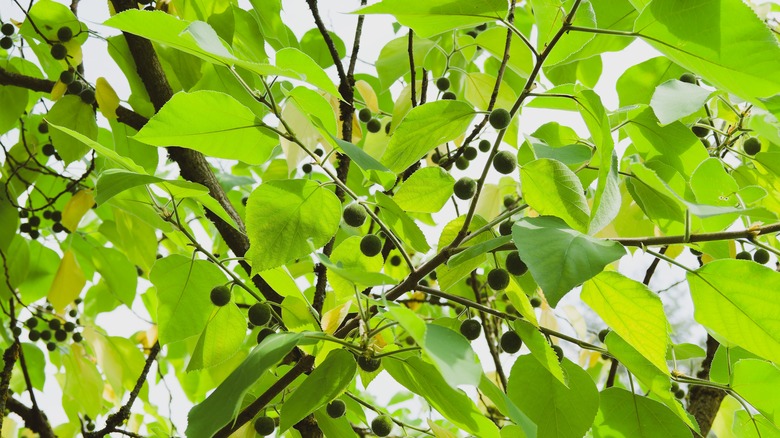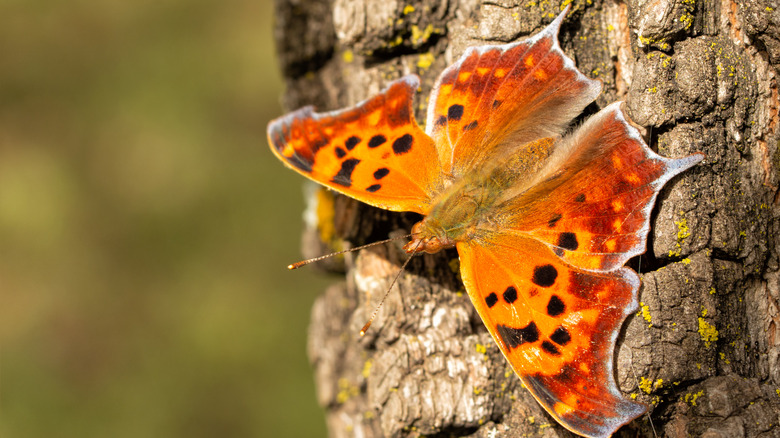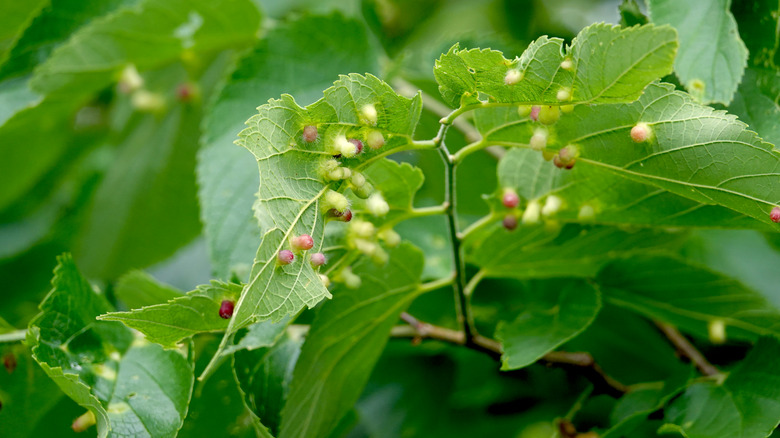While Hackberry Trees Attract Butterflies, They Are Not Worth The Headache
Forget about the permissibility of pineapple on pizza or whether a hotdog is a sandwich. If you really want to stir up a debate, ask people what they think about hackberry trees. While comments in gardening forums and social media posts skew heavily toward hackberry-haters, defenders argue that the trees are important sources of food and shelter for many animals, including several butterfly species. But hackberry trees are also messy, prone to numerous pests and diseases, and their prolific seedlings and suckers can hijack your outdoor space. Removing these trees from your yard can be costly, so they're probably not worth the headache of planting in the first place.
The common hackberry tree (Celtis occidentalis) is native to the midwestern and northeastern regions of the United States. These fast-growing, deciduous trees reach heights of 50 to 70 feet, and their bark is covered with wart-like bumps and corky ridges. Their dark green, toothed leaves turn yellow in the fall. Small greenish-white flowers appear in spring, which give way to green fruits, called drupes, that ripen to purplish brown in September and October. Hackberry trees tolerate a wide range of soil types and moisture levels, making them suitable for many different landscapes. But just because you can grow them doesn't mean you should.
Butterflies and other benefits of hackberry trees
While they're often drowned out by hackberry-haters, the tree's supporters make valid points about its importance to wildlife. Several butterfly species — including the mourning cloak, question mark, hackberry emperor, tawny emperor, and American snout — seek out these trees as larval host plants. The butterflies lay their eggs on the leaves of the tree, which later serve as food for hungry caterpillars. Hackberry trees are particularly critical hosts for specialist species like hackberry emperors and tawny emperors since their caterpillars are adapted to feed on just a handful of hosts (most of them in the Celtis genus). Hackberry trees also serve as winter homes for adult morning cloaks and question marks. These hibernating butterflies wait out the winter in the crevices of the tree's bark.
Like butterflies, birds flock to hackberry trees for food and shelter. They build nests in the tree's branches and more than a dozen species feast on the hackberry's fruits. Because the fruits stay on the trees for several months, hackberry trees can attract birds throughout the winter season. These fruits are an important food source for robins, flickers, mockingbirds, thrashers, waxwings, bobwhites, and wild turkeys. Many people also enjoy eating hackberry fruits, which can be used to make pies, custards, and candy.
Why hackberry trees aren't worth the headache
Butterflies aren't the only bugs to make homes in hackberry trees. Unfortunately, most other tenants are vandals. Hackberry trees are frequently attacked by the hackberry woolly aphid, which feeds on the tree's sap and excretes sticky, sugar-laden honeydew that coats the ground, your patio furniture, your car, and everything else under the tree. Black sooty mold grows on the honeydew excretions, making an even bigger mess. The larvae of another squatter, called the hackberry nipple gall maker, feed on the tree's leaves and trigger the formation of nipple-like bumps. When adults emerge in the fall, they often enter nearby houses.
Birds that feed on hackberry fruit are important seed dispersers, which is wonderful unless they're doing all their dispersing inside your yard. Seeds in the birds' droppings sprout into seedlings. Pulling up all these fast-growing plants can be maddening, especially if you wait too long. Hackberry trees also produce root suckers and young stems from the base of the tree. The suckers are persistent, and all you can do is keep cutting them down — year after year after year.
Hackberry trees are also susceptible to lace bugs, calico scale, root rot, wood-boring insects, witches' broom, and mistletoe infestations. While they're important for wildlife, maybe these trees are best left in the wild instead of your yard. Consider planting a lower-maintenance tree and using your extra time for more important things — like debating the best way to slice a sandwich (definitely diagonally).


